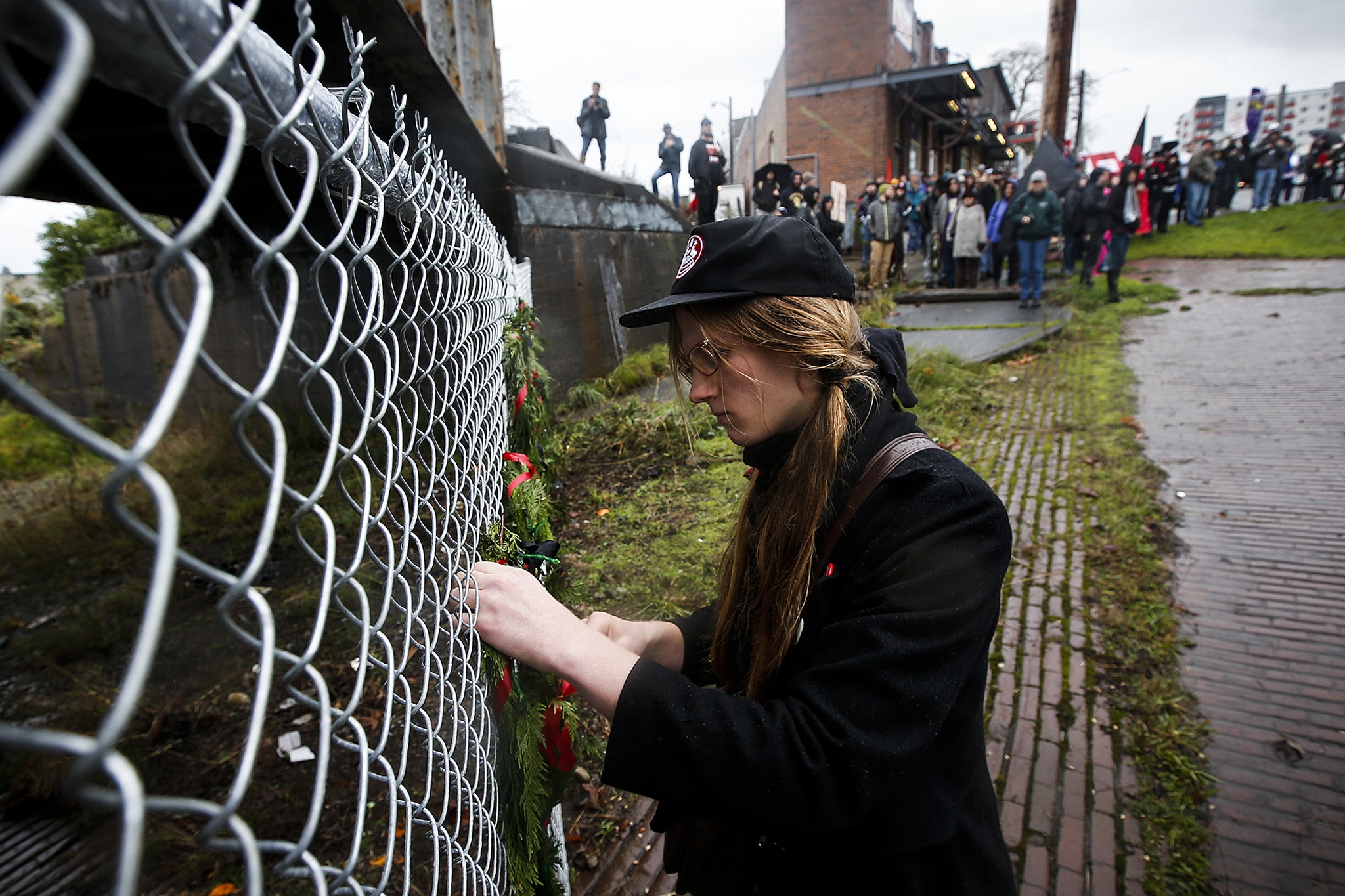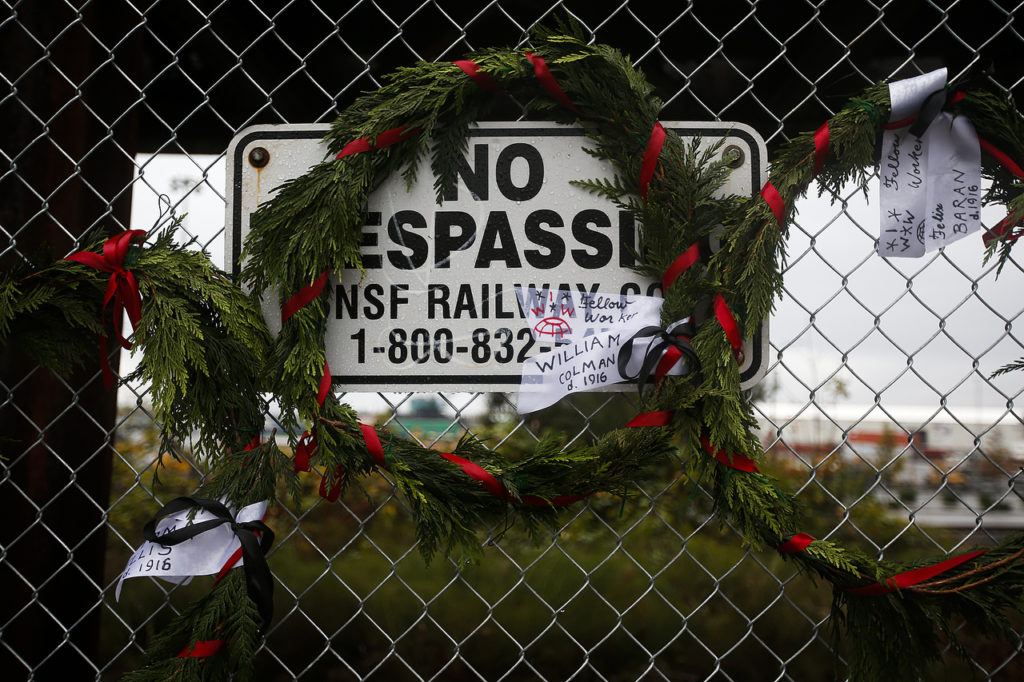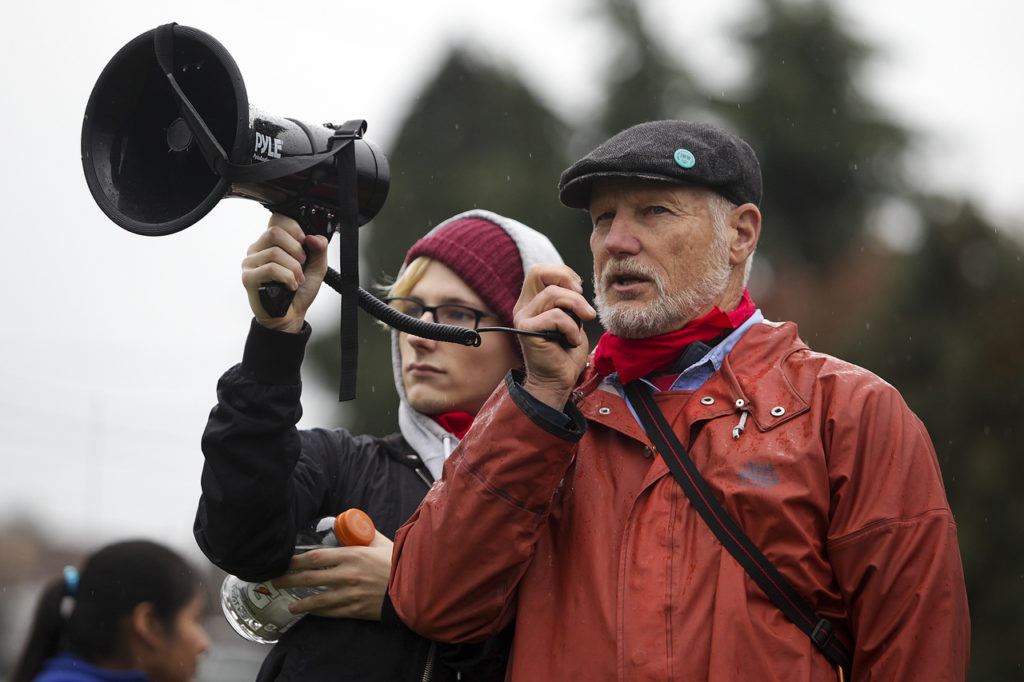EVERETT — They came to Everett to finish what hundreds of fellow workers set out to do 100 years ago.
Dozens of labor activists gathered in a steady rain Saturday near the city’s waterfront, where a leftover spur of Hewitt Avenue — still paved with bricks — runs down toward Port Gardner and fades away into train tracks.
They gathered by the memorial for the men who died on Nov. 5, 1916, in the Everett Massacre. It was a lopsided gunfight between union members, the community’s elected sheriff and hastily deputized citizens. The union members belonged to the Industrial Workers of the World (IWW).
The IWW had set its sight on organizing the city’s workers, many of who worked in the mills that dominated Everett’s waterfront. Mill work was dangerous — and sometimes deadly — and paid little. The Wobblies, as IWW members are called, had been banned from speaking on Everett’s main streets and met stiff resistance from local business leaders.
After several violent clashes, hundreds of Wobblies set out by boat from Seattle for Everett, where they meant to demonstrate at the corner of Hewitt and Wetmore avenues.
Local lawmen and a mob of armed vigilantes met the first boatload of Wobblies at the dock. Gunfire soon broke out. When the ship limped away from Everett, at least seven men — five Wobblies, a local National Guard lieutenant and a sheriff’s deputy — were dead or dying. A half dozen more IWW workers somehow disappeared in the bay.
“They saw us as a threat,” IWW member Dave Tucker told the crowd Saturday. “Well, we are a threat to the power structure.”
The Wobblies and supporters hung wreaths for the slain workers on a chain-link fence near the Everett Massacre memorial stone. Then they set out to finish the march to the corner of Hewitt and Wetmore.
The IWW differs from most unions, which aim to organize workers based on what work they do. The IWW seeks to organize workers by company. It is much smaller than it was 100 years ago. But its ambitions are just as big.
“Where’s the IWW now?” MoonDog Garcia, chair of the IWW’s General Executive Board, asked the crowd. “We’re in Whole Foods. We’re with entertainers in Times Square…. We’re still fighting for better working conditions, better pay and respect.”
That is a message that resonates with Tomwren Shannon, a 28-year-old mason from Lynnwood. He works in a union shop, but he joined the IWW on Saturday because he was attracted to its broader vision of a economic system run by workers rather than corporate board members, he said.
“Most unions still pit workers against workers,” Shannon said.
Radical unionism is not something stuck in the past. It is relevant today, when millions of Americans feel economically left behind and see the middle class being squeezed, he said. “That’s apparent from this election and how many times people have ‘Googled’ ‘democratic socialism.’”
This story originally misstated MoonDog Garcia’s affiliation with the IWW. Garcia is from Salt Lake City and chairs the union’s General Executive Board.
Dan Catchpole: 425-339-3454; dcatchpole@heraldnet.com. Twitter: @dcatchpole.
Talk to us
> Give us your news tips.
> Send us a letter to the editor.
> More Herald contact information.





























